Milwaukee 1675-1 Handleiding
Bekijk gratis de handleiding van Milwaukee 1675-1 (13 pagina’s), behorend tot de categorie Overig. Deze gids werd als nuttig beoordeeld door 58 mensen en kreeg gemiddeld 4.4 sterren uit 29.5 reviews. Heb je een vraag over Milwaukee 1675-1 of wil je andere gebruikers van dit product iets vragen? Stel een vraag
Pagina 1/13

TO REDUCE THE RISK OF INJURY, USER MUST READ AND UNDERSTAND OPERATOR'S
MANUAL.
AFIN DE RÉDUIRE LE RISQUE DE BLESSURES, L'UTILISATEUR DOIT LIRE ET BIEN
COMPRENDRE LE MANUEL DE L'UTILISATEUR.
PARA REDUCIR EL RIESGO DE LESIONES, EL USUARIO DEBE LEER Y ENTENDER EL
MANUAL DEL OPERADOR.
OPERATOR'S MANUAL
MANUEL de L'UTILISATEUR
MANUAL del OPERADOR
HEAVY-DUTY HOLE HAWG®
FOREUSE EXTRA-ROBUSTE HOLE HAWG®
TALADRO HEAVY-DUTY HOLE HAWG®
Catalog No.
No de Cat.
1670-1
1675-1
1675-6
1676-6

23
SPECIFICATIONS
Steel Capacity Wood Capacity
Cat. No. Volts
AC Speed No Load
RPm Twist Bit Auger Bits Ship Auger
Bits Selfeed Bit
1670-1
1675-1
1675-6
1676-6
120
120
120
120
-
High
Low
High
Low
High
Low
900
1200
300
1200
300
1200
300
7/16"
5/16"
1/2"
5/16"
1/2"
5/16"
1/2"
1-1/2"
1-1/8"
1-1/2"
1-1/8"
1-1/2"
1-1/8"
1-1/2"
1-1/2"
1-1/4"
1-1/2"
1-1/4"
1-1/2"
1-1/4"
1-1/2"
2-9/16"
1-3/8"
4-5/8"
1-3/8"
4-5/8"
1-3/8"
4-5/8"
Amps
Volts
Alternating Current Only
No Load Revolutions
per Minute (RPM)
CUS Underwriters Laboratories, Inc.
United States and Canada
Mexican Approvals Marking
SYMBOLOGY
FUNCTIONAL DESCRIPTION
12
3
4
5
6
7
8
9
1. Spade Handle
2. Chuck
3. Trigger Switch
4. Reversing Switch
5. Switch Handle
6. Motor Housing
7. Gear Shift Lever
8. Pipe Handle
9. Insulated Gripping
Surfaces
9
9
PERSONAL SAFETY
GENERAL POWER TOOL SAFETY WARNINGS
WORK AREA SAFETY
ELECTRICAL SAFETY
• Keep work area clean and well lit. Cluttered or
dark areas invite accidents.
• Do not operate power tools in explosive atmos-
pheres, such as in the presence of fl ammable
liquids, gases or dust. Power tools create sparks
which may ignite the dust or fumes.
• Keep children and bystanders away while
operating a power tool. Distractions can cause
you to lose control.
• Power tool plugs must match the outlet. Never
modify the plug in any way. Do not use any
adapter plugs with earthed (grounded) power
tools. Unmodifi ed plugs and matching outlets will
reduce risk of electric shock.
• Avoid body contact with earthed or grounded
surfaces such as pipes, radiators, ranges and
refrigerators. There is an increased risk of electric
shock if your body is earthed or grounded.
• Do not expose power tools to rain or wet condi-
tions. Water entering a power tool will increase
the risk of electric shock.
• Do not abuse the cord. Never use the cord for
carrying, pulling or unplugging the power tool.
Keep cord away from heat, oil, sharp edges
or moving parts. Damaged or entangled cords
increase the risk of electric shock.
• When operating a power tool outdoors, use an
extension cord suitable for outdoor use. Use
of a cord suitable for outdoor use reduces the risk
of electric shock.
• If operating a power tool in a damp location is
unavoidable, use a ground fault circuit inter-
rupter (GFCI) protected supply. Use of an GFCI
reduces the risk of electric shock.
• Remove any adjusting key or wrench before
turning the power tool on. A wrench or a key left
attached to a rotating part of the power tool may
result in personal injury.
• Do not overreach. Keep proper footing and
balance at all times. This enables better control
of the power tool in unexpected situations.
• Dress properly. Do not wear loose clothing or
jewellery. Keep your hair, clothing and gloves
away from moving parts. Loose clothes, jewel-
lery or long hair can be caught in moving parts.
• If devices are provided for the connection of
dust extraction and collection facilities, ensure
these are connected and properly used. Use of
dust collection can reduce dust-related hazards.
WARNING READ ALL SAFETY WARNINGS AND ALL INSTRUCTIONS. Failure
to follow the warnings and instructions may result in electric shock, fi re and/or serious
injury. Save all warnings and instructions for future reference. The term "power
tool" in the warnings refers to your mains-operated (corded) power tool or battery-operated
(cordless) power tool.
POWER TOOL USE AND CARE
• Do not force the power tool. Use the correct
power tool for your application. The correct
power tool will do the job better and safer at the
rate for which it was designed.
• Do not use the power tool if the switch does not
turn it on and off. Any power tool that cannot be
controlled with the switch is dangerous and must
be repaired.
• Disconnect the plug from the power source
and/or the battery pack from the power tool
before making any adjustments, changing
accessories, or storing power tools. Such pre-
ventive safety measures reduce the risk of starting
the power tool accidentally.
• Store idle power tools out of the reach of chil-
dren and do not allow persons unfamiliar with
the power tool or these instructions to operate
the power tool. Power tools are dangerous in the
hands of untrained users.
• Maintain power tools. Check for misalignment
or binding of moving parts, breakage of parts
and any other condition that may affect the
power tool’s operation. If damaged, have the
power tool repaired before use. Many accidents
are caused by poorly maintained power tools.
• Keep cutting tools sharp and clean. Properly
maintained cutting tools with sharp cutting edges
are less likely to bind and are easier to control.
• Use the power tool, accessories and tool bits
etc. in accordance with these instructions, tak-
ing into account the working conditions and
the work to be performed. Use of the power tool
for operations different from those intended could
result in a hazardous situation.
• Stay alert, watch what you are doing and use
common sense when operating a power tool.
Do not use a power tool while you are tired or
under the infl uence of drugs, alcohol or medi-
cation. A moment of inattention while operating
power tools may result in serious personal injury.
• Use personal protective equipment. Always
wear eye protection. Protective equipment such
as dust mask, non-skid safety shoes, hard hat, or
hearing protection used for appropriate conditions
will reduce personal injuries.
• Prevent unintentional starting. Ensure the
switch is in the off-position before connecting
to power source and/or battery pack, picking
up or carrying the tool. Carrying power tools with
your fi nger on the switch or energising power tools
that have the switch on invites accidents.
SERVICE
• Have your power tool serviced by a qualifi ed
repair person using only identical replacement
parts. This will ensure that the safety of the power
tool is maintained.
SPECIFIC SAFETY RULES
• Use auxiliary handle(s), if supplied with the
tool. Loss of control can cause personal injury.
• Hold power tool by insulated gripping surfaces,
when performing an operation where the cutting
accessory may contact hidden wiring or its
own cord. Cutting accessory contacting a “live”
wire may make exposed metal parts of the power
tool “live” and could give the operator an electric
shock.
• Maintain labels and nameplates. These carry
important information. If unreadable or missing,
contact a MILWAUKEE service facility for a free
replacement.
• WARNING Some dust created by power sanding,
sawing, grinding, drilling, and other construction
activities contains chemicals known to cause
cancer, birth defects or other reproductive harm.
Some examples of these chemicals are:
• lead from lead-based paint
• crystalline silica from bricks and cement and
other masonry products, and
• arsenic and chromium from chemically-treated
lumber.
Your risk from these exposures varies, depending
on how often you do this type of work. To reduce
your exposure to these chemicals: work in a well
ventilated area, and work with approved safety
equipment, such as those dust masks that are spe-
cially designed to fi lter out microscopic particles.

45
Fig. B Fig. C
Fig. A
GROUNDING
WARNING Improperly connecting the
grounding wire can result in the risk of elec-
tric shock. Check with a qualifi ed electrician
if you are in doubt as to whether the outlet is
properly grounded. Do not modify the plug
provided with the tool. Never remove the
grounding prong from the plug. Do not use
the tool if the cord or plug is damaged. If
damaged, have it repaired by a MILWAUKEE
service facility before use. If the plug will not
fi t the outlet, have a proper outlet installed by
a qualifi ed electrician.
Grounded Tools: Tools with Three Prong Plugs
Tools marked “Grounding Required” have a three
wire cord and three prong grounding plug. The
plug must be connected to a properly grounded
outlet (See Figure A). If the tool should electrically
malfunction or break down, grounding provides a
low resistance path to carry electricity away from
the user, reducing the risk of electric shock.
The grounding prong in the plug is connected
through the green wire inside the cord to the
grounding system in the tool. The green wire in the
cord must be the only wire connected to the tool's
grounding system and must never be attached to
an electrically “live” terminal.
Your tool must be plugged into
an appropriate outlet, properly
installed and grounded in accord-
ance with all codes and ordinances.
The plug and outlet should look like
those in Figure A.
Double Insulated Tools:
Tools with Two Prong Plugs
Tools marked “Double Insulated” do not require
grounding. They have a special double insula-
tion system which satisfi es OSHA requirements
and complies with the applicable standards of
Underwriters Laboratories, Inc.,
the Canadian Standard Asso-
ciation and the National Elec-
trical Code. Double Insulated
tools may be used in either of
the 120 volt outlets shown in
Figures B and C.
Grounded tools require a three wire extension
cord. Double insulated tools can use either a two
or three wire extension cord. As the distance from
the supply outlet increases, you must use a heavier
gauge extension cord. Using extension cords with
inadequately sized wire causes a serious drop in
voltage, resulting in loss of power and possible tool
damage. Refer to the table shown to determine the
required minimum wire size.
The smaller the gauge number of the wire, the
greater the capacity of the cord. For example, a 14
gauge cord can carry a higher current than a 16
gauge cord. When using more than one extension
cord to make up the total length, be sure each cord
contains at least the minimum wire size required.
If you are using one extension cord for more than
one tool, add the nameplate amperes and use the
sum to determine the required minimum wire size.
Guidelines for Using Extension Cords
• If you are using an extension cord outdoors, be
sure it is marked with the suffi x “W-A” (“W” in
Canada) to indicate that it is acceptable for outdoor
use.
• Be sure your extension cord is properly wired
and in good electrical condition. Always replace a
damaged extension cord or have it repaired by a
qualifi ed person before using it.
• Protect your extension cords from sharp objects,
excessive heat and damp or wet areas.
READ AND SAVE ALL
INSTRUCTIONS FOR FUTURE USE.
* Based on limiting the line voltage drop to fi ve volts at
150% of the rated amperes.
EXTENSION CORDS
Recommended Minimum Wire Gauge
For Extension Cords*
Extension Cord Length
Nameplate
Amperes 25' 50' 75' 100' 150'
0 - 2.0
2.1 - 3.4
3.5 - 5.0
5.1 - 7.0
7.1 - 12.0
12.1 - 16.0
16.1 - 20.0
18
18
18
18
16
14
12
18
18
18
16
14
12
10
18
18
16
14
12
10
18
16
14
12
10
16
14
12
12
ASSEMBLY
Installing Bits into Keyed Chucks
1. Unplug tool.
2. Open the chuck jaws
wide enough to insert
the bit. Be sure the bit
shank and chuck jaws
are clean. Dirt particles
may prevent the bit from
lining up properly.
3. Insert the bit into the
chuck. Center the bit in
the chuck jaws and lift it about 1/16" off of the
bottom. Tighten the chuck jaws by hand to align
the bit.
4. Place the chuck key in each of the three holes in
the chuck, turning it clockwise. Tighten securely.
5. To remove the bit, insert the chuck key into one
of the holes in the chuck and turn it counterclock-
wise.
Bit Selection
• Use sharp bits. Sharp bits are less likely to bind
when drilling.
• Use the proper bit for the job. There are many
types of bits designed for specifi c purposes. Check
the information on the bit's packaging for proper
usage.
• Do not use bits larger than the rated capacity of the
drill. Gear damage or motor overload may result.
Pipe Handle
The pipe handle may be used on either side of the
tool. Thread pipe handle into one of the threaded
holes in the motor housing.
Spade Handle
The spade handle can be
attached to the tool in three
positions. Remove the hex
head screws which secure
the handle. Remove the han-
dle and move it to the desired
position. To mount the handle
in position C, it is necessary
to reverse the mounting holes
by turning the handle around.
A
B
C
Fig. 2
Bit binding
B
A
WARNING To reduce the risk of injury,
wear safety goggles or glasses with side
shields.
WARNING To reduce the risk of injury,
always unplug tool before attaching or remov-
ing accessories or making adjustments. Use
only specifi cally recommended accessories.
Others may be hazardous. WARNING To reduce the risk of
personal injury when drilling, hold tool by in-
sulated gripping surfaces when performing an
operation where the cutting tool may contact
hidden wiring or its own cord. Contact with a
"live" wire will make exposed metal parts of
the tool "live" and shock the operator.
WARNING When drilling with a single
speed drill or in HI with a two speed drill,
always hold the drill securely using the pipe
handle, or brace the drill against a solid fi xed
object in preparation for a sudden reaction.
When drilling in LO with a two speed drill,
always brace the drill against a solid fi xed
object in preparation for a sudden reaction.
When drilling, never use your body to brace
drill.
Never put your hands (or other body parts)
between the part of the drill being braced and
the object it is being braced against. Hands
(or other body parts) that are in the path of the
reaction can be pinched, crushed and broken.
If the bit binds, the drill will suddenly react in the
opposite direction of the rotation of the bit. Figure
3 shows the path of reaction (B) if the drill bit binds
while being driven in forward (A). The operator
should reduce the chances of a sudden reaction
by following the instructions listed below.
OPERATION
Fig. 3
Product specificaties
| Merk: | Milwaukee |
| Categorie: | Overig |
| Model: | 1675-1 |
Heb je hulp nodig?
Als je hulp nodig hebt met Milwaukee 1675-1 stel dan hieronder een vraag en andere gebruikers zullen je antwoorden
Handleiding Overig Milwaukee
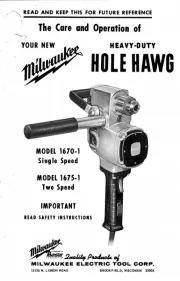
8 Maart 2023

8 Maart 2023

8 Maart 2023

8 Maart 2023

8 Maart 2023

8 Maart 2023

8 Maart 2023

8 Maart 2023

8 Maart 2023
Handleiding Overig
- NDS
- Kraft
- Karcher
- Bosch
- Mac Allister
- Easymaxx
- Duro
- Dolmar
- Brennenstuhl
- Komatsu
- IntelliFlo
- Workzone
- Skil
- Festool
- DeWalt
Nieuwste handleidingen voor Overig
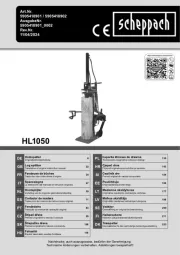
5 Mei 2024
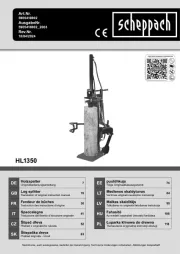
5 Mei 2024
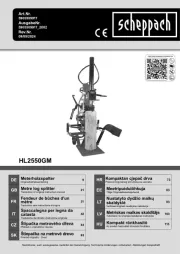
5 Mei 2024
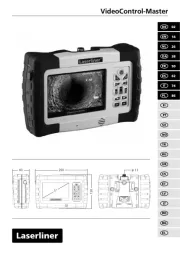
5 Februari 2024

5 Februari 2024

14 Januari 2024

14 Januari 2024

8 Januari 2024
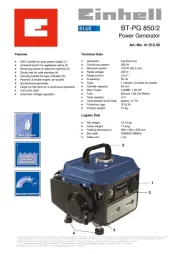
10 December 2023

10 December 2023